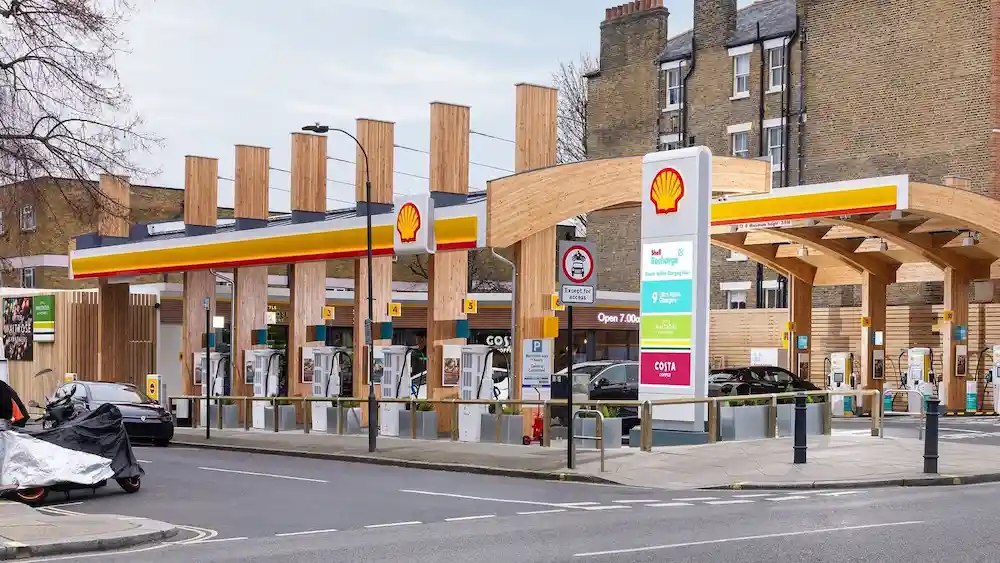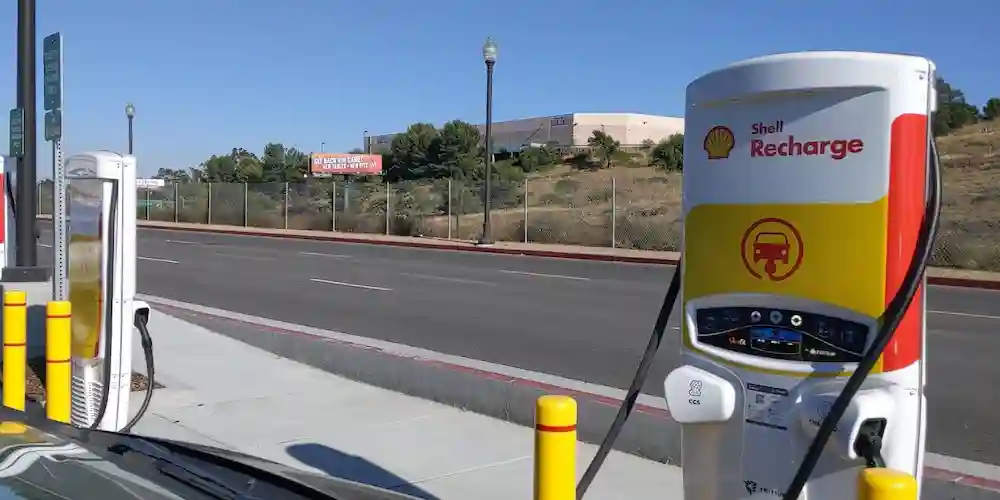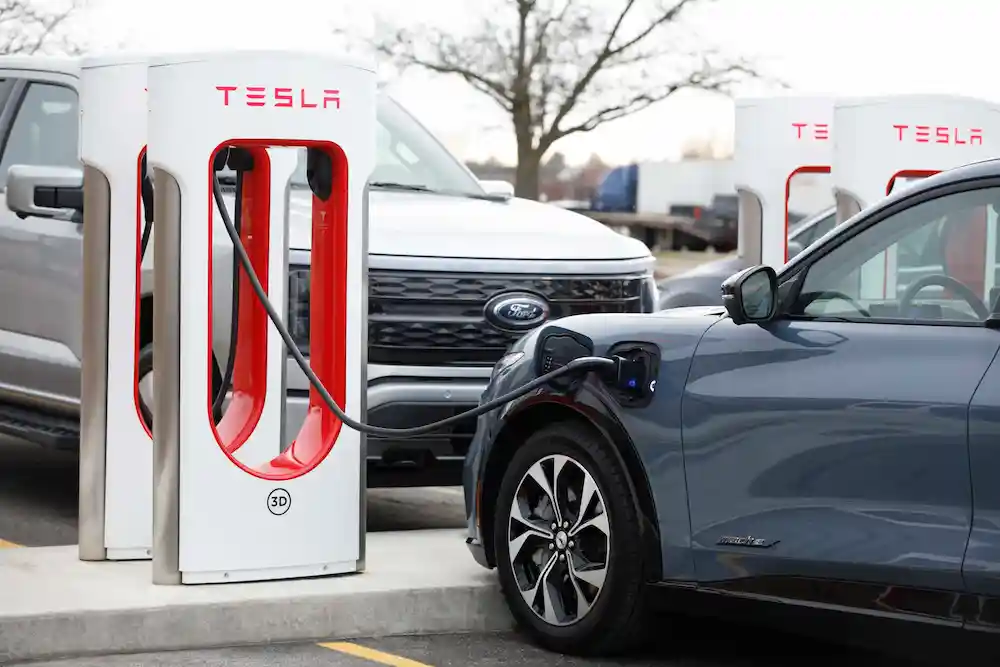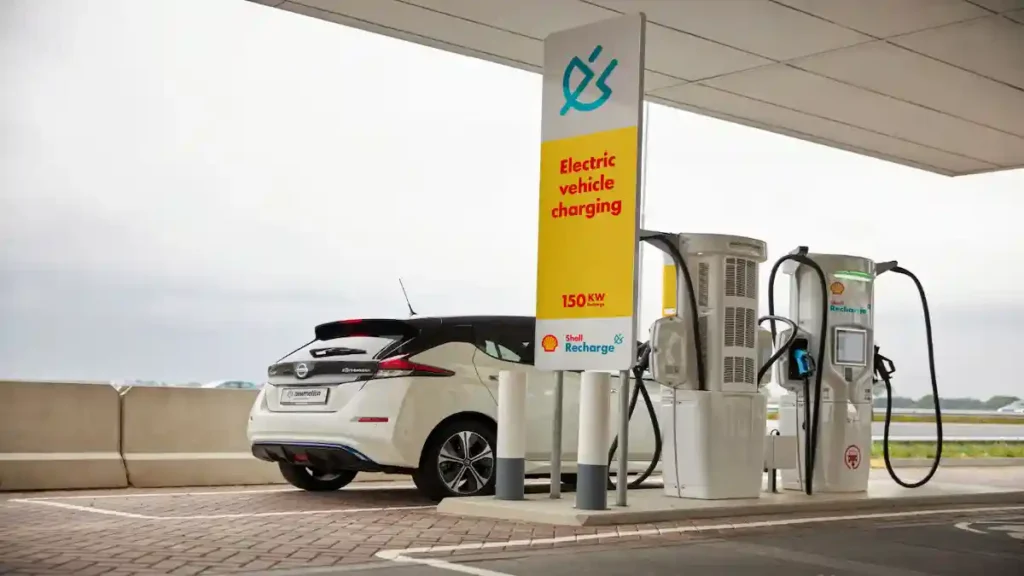As electric vehicle (EV) adoption continues to rise, drivers are increasingly taking their EVs on longer journeys. One of the most common questions among EV owners is whether public charging stations, like Shell Recharge, can deliver the speed and convenience needed for long-distance road trips. Shell Recharge is rapidly expanding across the globe—but how does it actually perform when you’re hundreds of miles from home?
Let’s break down what Shell Recharge offers, how fast its charging really is, and whether it’s up to the task of supporting long EV journeys.
What Is Shell Recharge?

Shell Recharge is the public electric vehicle charging network operated by Shell, offering a combination of fast and standard charging points across cities, highways, parking lots, supermarkets, and Shell fuel stations. It evolved from Shell’s acquisition of EV companies and infrastructure platforms and is now expanding aggressively across North America, Europe, and Asia.
With tens of thousands of public charging points in operation and ambitious growth plans, Shell Recharge is becoming a familiar name for EV drivers. But it’s not just about how many chargers exist—it’s about whether they’re fast and reliable when you really need them.
Charging Speed: What to Expect
Shell Recharge offers a range of charger types: slower AC chargers for overnight or longer stops, and DC fast chargers designed for quick top-ups on the road. The difference between these charger types is massive when time is a factor.
Most Shell Recharge DC chargers offer power ratings between 50 kW and 175 kW, with some ultra-fast locations offering up to 360 kW. For a modern EV with fast-charging capabilities, this means you can typically recharge from 20% to 80% in about 25 to 35 minutes. For example, a vehicle like the Hyundai IONIQ 5 or Kia EV6 might complete that range boost in just over 20 minutes under ideal conditions.
Of course, actual speed depends heavily on your specific car. Some EVs max out at 50 kW or less, in which case the charger can’t deliver anything faster than the vehicle allows. Additionally, outside temperatures, battery conditioning, and station occupancy can all affect charging time.
Still, for most EVs released in the past three to four years, Shell Recharge offers enough speed to make long trips practical—especially if you plan your stops during meal breaks or rest periods.
Typical charging times (DC fast):
| Battery Level | Time to 80% | EV Example |
|---|---|---|
| 10% → 80% | ~30 minutes | Hyundai IONIQ 5 @ 175kW |
| 20% → 80% | ~40–45 mins | Kia EV6 @ 100kW |
| 10% → 100% | ~60–70 mins | VW ID.4 @ 125kW |
Note: Charging speed also depends on your EV’s max charging capacity. If your car caps at 50kW, it won’t benefit from 175kW chargers.
Are Shell Chargers Conveniently Located?

Speed is one thing—but access and availability are just as important. Shell Recharge is growing fast, with locations throughout major metropolitan areas, along highways, and increasingly in rural regions. Shell has also made charging available at many of its traditional fuel stations, offering familiar pit-stop amenities like snacks, bathrooms, and Wi-Fi while your car charges.
Additionally, Shell Recharge supports roaming, meaning you can use the Shell app or Shell Recharge card to access chargers operated by partner networks. This expands your effective charging coverage to include thousands more locations across Europe and North America, reducing the chance of being stranded with no options nearby.
In several countries, Shell is building high-capacity EV charging hubs with multiple ultra-fast chargers to serve as major rest stops. These hubs are part of Shell’s long-term vision to support the future of electric travel.
Is It Suitable for Long Trips?
In short—yes, but with some planning. If your EV supports fast charging and you map your route using charging-friendly tools, Shell Recharge is more than capable of supporting long-distance travel. Most long-range EVs today can travel 220 to 300 miles on a full charge, so stopping once every 2.5 to 3.5 hours is typical.
When you do stop, charging from 20% to 80% can take roughly 30 minutes at most Shell DC fast chargers. If you time this with a lunch or restroom break, you may not even feel the downtime. For even faster charging, look for ultra-fast Shell Recharge sites, especially those near motorways.
What matters most is charger availability. In regions where Shell has a high presence or strong roaming partnerships, you’re well covered. But in some rural or underdeveloped markets, chargers may still be sparse, and wait times could occasionally occur.
Planning your route ahead of time using Shell’s app or a tool like A Better Routeplanner can help avoid surprises.
How Does It Compare to Other Charging Networks?

Shell Recharge may not be the absolute fastest network in the world, but it competes well with other major providers. Tesla’s Supercharger network is still the gold standard in terms of speed and ease of use—especially for Tesla owners—but Shell is catching up in terms of user experience and public access.
Electrify America and Ionity offer higher peak speeds in some locations, but they don’t have Shell’s retail infrastructure, like convenience stores and customer service options. Meanwhile, Shell’s integration with other networks allows you to access a much wider web of chargers with a single account.
While charging speeds at Shell may slightly lag behind Tesla’s 250 kW+ chargers, its ultra-fast locations are more than capable for most EVs. And with a focus on customer amenities and a seamless app experience, Shell is positioning itself as one of the most driver-friendly networks for EV travel.
Here’s how Shell Recharge compares with top competitors:
| Feature | Shell Recharge | Tesla Supercharger | Electrify America |
|---|---|---|---|
| Max Speed (kW) | Up to 360kW | Up to 250kW | Up to 350kW |
| Vehicle Support | All EVs | Tesla only (or CCS) | All EVs |
| Network Size | Growing | Huge (Tesla only) | Large (US only) |
| App Experience | Robust | Excellent | Average |
| Roaming Options | Yes | No | Some |
Verdict: Shell Recharge holds up well for long trips, especially in Europe. Tesla’s network is more mature, but Shell is brand-agnostic and improving fast.
Cost of Charging
Pricing at Shell Recharge varies by location and charger speed. AC chargers are generally the cheapest option, ideal for overnight parking or workplace charging. DC fast chargers cost more per kilowatt-hour, and ultra-fast chargers are at the higher end of the price range.
You can expect to pay more for the convenience of a quick charge on a long trip—often double the cost per kilowatt-hour compared to home charging. Some countries also apply idle fees if your vehicle stays plugged in too long after reaching full charge.
Using the Shell Recharge app, drivers can view pricing before plugging in, locate nearby stations, and check real-time charger availability. While Shell doesn’t currently offer widespread subscription discounts, some countries provide reduced rates for regular users or Shell loyalty program members.
What Does It Cost to Use Shell Recharge on a Trip?
Prices vary by location and provider, but here’s a general overview:
| Charging Type | Avg. Price (Europe/US) | Example |
|---|---|---|
| AC (22kW) | $0.25–$0.35/kWh | Good for overnight parking |
| DC Fast (50–175kW) | $0.40–$0.60/kWh | Common on highways |
| Ultra-Fast (300kW+) | $0.60–$0.80/kWh | Premium speed locations |
User Experience and Reliability
Driver feedback on Shell Recharge is mostly positive, especially regarding ease of use, station cleanliness, and charger uptime. The app is straightforward, and payment is usually seamless through the app or a contactless card.
That said, as with all charging networks, occasional issues can arise. Some users report occasional maintenance problems or charger errors, often tied to third-party site operators. Reliability tends to be higher at Shell-owned locations and newer stations, where the company has more control over upkeep and infrastructure quality.
Shell is actively investing in upgrading older sites and increasing redundancy at new locations to ensure that if one charger fails, another is available. As infrastructure improves and more sites come online, reliability is expected to increase further.
To give a more balanced picture, here’s what actual EV drivers from different regions have reported:
David M. – Des Moines, Iowa (USA)
“I regularly use Shell Recharge in Iowa. They’re not the cheapest, but they’ve been reliable in most places. As long as you avoid the locations known to have issues, it’s a solid experience.”
Lauren B. – London, Ontario (Canada)
“I used Shell Recharge for the first time in London and was surprised by how quick the charging was—definitely better than some stations I’ve used back in Detroit. I’ve gone back a few times since. It’s been really consistent.”
Tom R. – Cornwall, England (UK)
“I was traveling through Cornwall where options are limited, so I tried a Shell Recharge station. It worked without issue, which was great. But honestly, the pricing was a bit steep compared to others in the area.”
Giulia S. – Milan, Italy (Europe)
“For work I drive a company EV, and Shell Recharge has made it easy. It lets me charge across different networks without registering for each one, and I can tap and go without the app. That kind of convenience really matters.”
These testimonials reflect a reliable, well-managed charging experience across multiple countries. While pricing concerns come up in places like the UK, the general impression is that Shell Recharge is doing a commendable job in maintaining uptime and simplifying the charging process. With expanding coverage and continuous infrastructure upgrades, Shell’s network is positioning itself as a reliable option for both local and long-distance EV drivers.
Related Posts
Clean, Free EV Charging: Top EVs You Can Charge with Solar Power at Home in 2025
BYD vs Tesla Showdown: Range, Charging, Price, Battery & More Compared
Top 7 U.S. States Offering Massive EV and Solar Incentives in 2025
Is the Sun Enough? What It Takes to Charge an EV with Solar Panels
Final Verdict: Is Shell Recharge Fast Enough?
Yes—Shell Recharge is absolutely fast enough for long trips, provided your vehicle supports DC fast charging and you plan your route with charging in mind. Charging from 20% to 80% in roughly half an hour is entirely achievable at Shell stations, and their growing network of locations makes them a solid choice for road-tripping EV drivers.
With a mix of convenience, accessibility, and decent charging speeds, Shell Recharge is a competitive option for today’s electric drivers. It may not be the fastest or most widespread yet, but it’s reliable, growing quickly, and more than capable of supporting stress-free electric travel across long distances.
Author
Top Solar Picks, founded by John, a Solar Energy Writer and Researcher with over 12 years of experience in renewable energy, is dedicated to helping homeowners and businesses make informed, data-driven decisions about solar power. John’s expertise and research pr...

